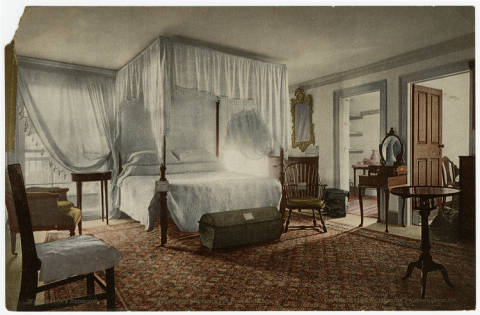Today’s reading focused on the term “spreadability”. According to the authors, “spreadability” refers to any set of “technological resources” that make it easier for us to circulate content (Jenkins et al 4). From my understanding, this means that content with high spreadability would have the potential to reach more people, more easily.
Another term that we’ve discussed is “rhetorical velocity”, which is mainly a way to analyze a text’s potential for recomposition. Devoss and Ridolfo define some potential analytical questions as: why might someone recompose my work? how might they recompose it? how could it be delivered or circulated?
As a museum studies minor, most of the work experience I can draw on deals with museums and archives. For example, this past summer, I interned at Mt. Vernon’s library, where my job was to scan old photos of the estate, input metadata, and upload them to a public database. These photos, formerly confined to old boxes, now have decent spreadability: anyone with access to the internet can find them on Mt. Vernon’s website and download them or share them with others. They also have a decent degree of rhetorical velocity: the team at Mt. Vernon hopes that researchers will use the photos in their own projects; we don’t just want people to look at them. As physical “print” photos, they weren’t easy to circulate, but now, they are quite easy to share.

I also interned at the Mifflinburg Buggy Museum, where I helped with a physical exhibit about Krampus and other “dark” Christmas figures. The physical exhibit was only accessible to people who could travel to Mifflinburg, so some form of transportation was required. (This may be stretching the term “technological resources” that Jenkins et al use, but I think it counts.) While my mother was easily able to send a picture of a Krampus mask to my uncle as a joke, she could not send him the entire in-person exhibit experience. The most we were able to do was photograph text panels and send them along.
Thus physical objects—like print texts, DVDs, or even museum exhibits—are not easily circulatable. They must be exchanged and experienced in-person. Digital things—like PDFs, YouTube videos (see Kes’s post about YouTube here) or online museum exhibits—are much easier to share. Because of this, I decided to do an online exhibit for my museum capstone project. Part of the capstone involves promoting the exhibit, getting people to look at it, and collecting feedback. I figured that it would be much easier to circulate an online exhibit on social media and such. However, in general, I think that the in-person museum experience is much more effective than a digital one, so perhaps “more spreadable” does not always mean “more effective”.
Word count: 491
Works Cited:
Jenkins, Henry, et al. “Why Media Spreads.” Spreadable Media: Creating Value and Meaning in a Networked Culture. New York University Press, 2018.
Ridolfo, Jim, and DeVoss, Dànielle Nicole. “Composing for Recomposition: Rhetorical Velocity and Delivery.” Kairos: A Journal of Rhetoric, Technology, and Pedagogy, Vol. 13, No. 2, 2009.
